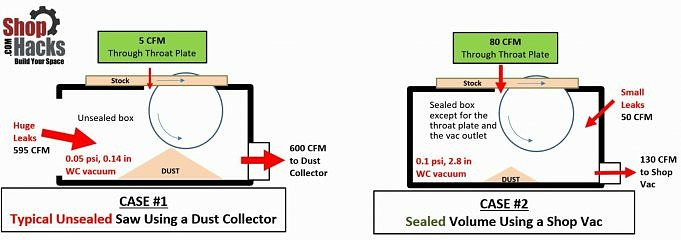This guide will show you how to connect a shop vacuum to a tablesaw. This is a great way to keep your work area clean and free of debris, which can help you avoid dangerous accidents. We will be sharing some tips and tricks on how to safely connect the vac.
How to connect the ShopVac?
Attaching a shop vacuum hose to your tablesaw is easiest on the blade guard. This will help catch most of the debris that comes off of your work area, which makes for a safer working environment. You should put it right near where you are making your cut. Make sure you have turned the saw off before you connect the saw to your shop vac.
Which type of Shop-Vac should you use?
While any dust collection system is capable of collecting larger particles, it’s better to choose a stronger system that can take in more. The higher the amps, the more power the Shop-Vac has, so more material can be sucked up at one time. You should be able to find this information on the outside of the vacuum or in the products manual.
How do you connect your shop-vac?
1) Disconnect your saw from the power source. Next, connect the shop vacuum hose to the port where the saw blade is. To keep the vacuum in place, attach an adapter to the port or tape it with duct tape.
2) Once everything is firmly attached, turn on your saw and put it through its paces to make sure there are no leaks. It is important that no dust escapes from your connection during use.
3. Finally, ensure that your shop vacuum hose is sufficiently long to reach all parts of your workshop. You can add an extension tube to the end of your shop vac hose if it is not.
Once you have completed the above steps and checked that everything is working properly, you can use your vacuum to get rid of any sawdust. Now, with a shop vac hooked up, youre going to have a much cleaner workspace and less chance of picking up any debris with your saw.
Tips and tricks for using a shop vac with a table saw:
1) Even with a shop vac connected, it is still important to use your dust collection system. Manufacturers recommend connecting the system to your saw whenever you use it.
2) You can run into problems if you want to connect your shop vac to your band saw or jointer, so make sure you check the manufacturers guidelines for your saw before you try to connect it.
3) If there is too much dust for the shop vac to handle, use a larger or wet/dry vacuum to collect this material. You can also attach an air filter to the vacuum so any fine particles will be collected in that instead of your workshop.
4) Using a shop vac can make any job easier by saving you time and money. You can also avoid injuries by using a shop vac.
5) When using your shop vac hose on a table saw or another stationary machine, make sure that everything is firmly attached before you start up your machine. If you get any leaks, you may want to make some adjustments.
6) You can use any type or dust collection system to clean your work area if you don’t have a shop vacuum. This includes an air filter or dedicated dust collector device that is hooked up directly to your saw. Each of these options can help you keep your workspace clean and safer.
Avoid connecting your shop vacuum to small machines such as sanders. This can clog up the filter in your vacuum and reduce its ability to suck things up.
8) You should always check to make sure that there are no leaks when you connect a shop vac. If you see any, turn off your tool immediately and double-check everything.
Steps to follow:
1) Connect your shop vacuum hose to the port that is near your saw blade.
2) Make sure that the vacuum is firmly attached
3. Turn on the table saw to make sure there are no water leaks
4) Make sure your shop vac hose is long enough to reach all around your workspace
5) Make sure that after you connect to the table saw, you run the saw with the dust collection system on.
7) If there is too much dust for the shop vac to handle, use a larger or wet/dry vacuum to collect this material. An air filter can also be used to capture fine particles that may not reach your filter.
8) Use any type of dust collection device to clean your work area if you don’t have a shop vacuum.
9) When possible, avoid connecting your shop vac to smaller machines like sanders or planers. This can clog up the filter in your vacuum and reduce its ability to suck things up.
Conclusion
This video will show you how to connect your shop vac to your tablesaw to improve your cutting quality and clean up your workspace. We hope you find this useful and can put it to use in your workshop.



